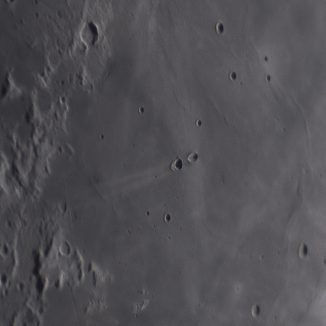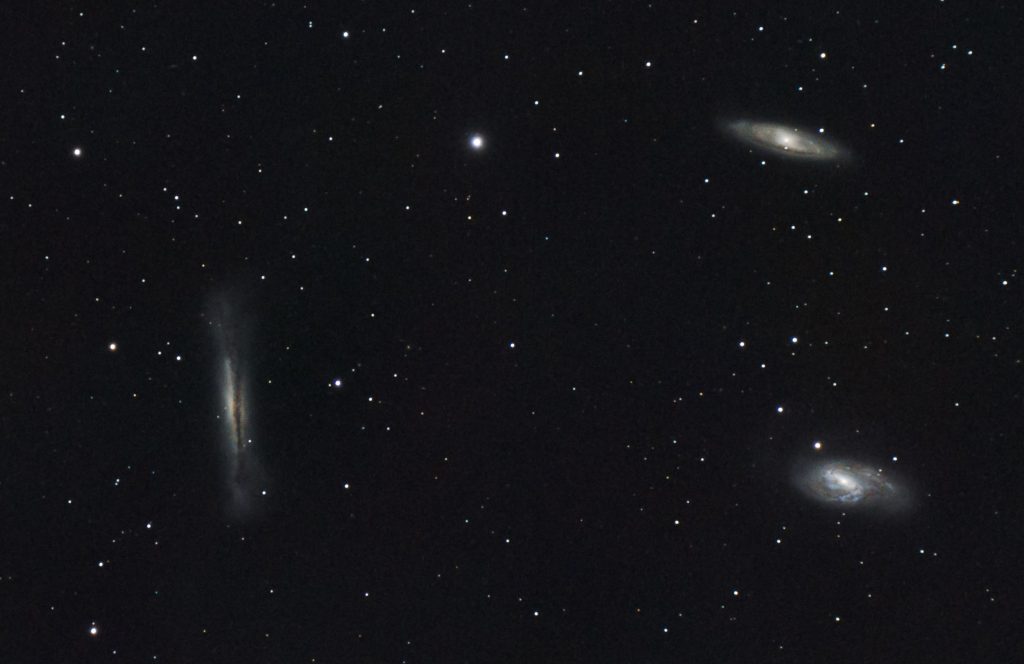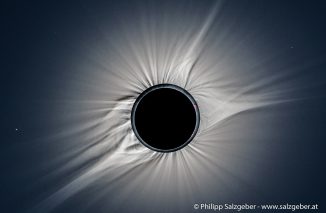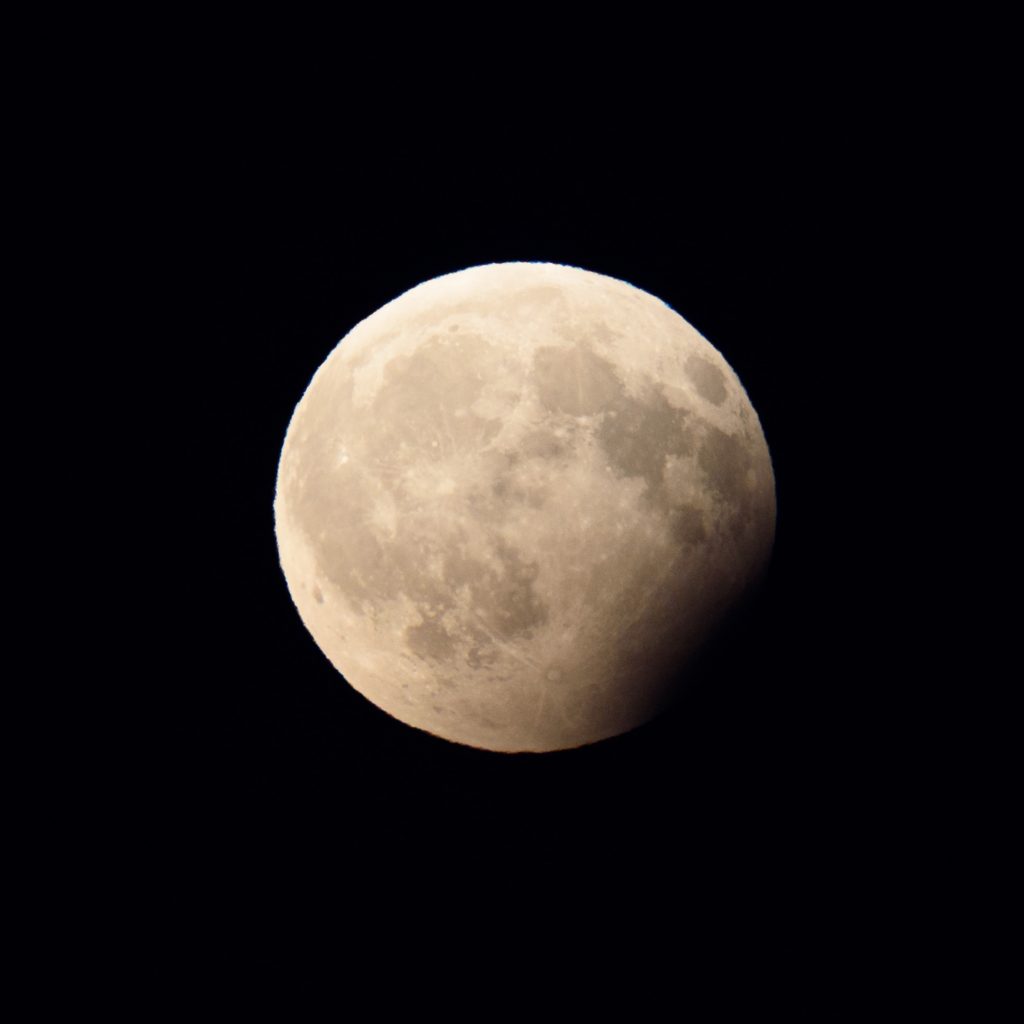Today I pointed the 20cm Newtonian telescope again towards the moon. Shortly after first quarter quite a few nice landscapes are visible.
All images were captured as 120s AVI files using a 3x Barlow lens and the QHY5IIc camera.
Today I pointed the 20cm Newtonian telescope again towards the moon. Shortly after first quarter quite a few nice landscapes are visible.
All images were captured as 120s AVI files using a 3x Barlow lens and the QHY5IIc camera.

The 20cm Newtonian telescope in combination with the Televue 3x Barlow show a wealth of detail on the moon.

I haven’t photographed the moon at this age, so here are some new lunar features for me. Read More
As the ISS orbits our planet, from time to time it passes in front of the sun for a given location.
https://www.calsky.com and https://transit-finder.com/ allow you to predict such transits for your location.
Last Saturday such a transit happened, and I was able to capture it:
Springtime is galaxy time! After a frustrating friday night with incorrect mount setup, iAstroHub not working properly, which resulted in badly focussed and guided images, saturday evening proved much more successful:

Leo Triplet, M65, M65 and NGC3628, 25x120s, Astro-Physics 127mm f/8, Nikon D750, BackyardNikon, PHD2, Regim, Photoshop, Lightroom
The Leo triplet is a trio of galaxies which are physically near each other, a faint tidal tail can be seen to the upper left of M66, the lower right galaxy.
The distance to this galaxy group is about 35 million lightyears.
In Autumn the Andromeda galaxy is conveniently placed in the darkes part of the sky for my home, the eastern sky.
Due to the vibration prone location of my telescope on the top of our house, I had to throw away 2/3rds of the individual exposures due to trailed stars, so I ended up with only 22,5 minutes of data. Another possibility is, that the guiding didn’t work properly, calibration was suspiciously short.
Anyways, here is the Andromeda galaxy at 1016mm focal length, Nikon D750, 45x30s, ISO 1600, Astro-Physics 127mm f/8, Meade LXD 650 mount.

These are preliminary results of the Solar Eclipse 2017. Me and my family traveled to Madras Oregon, to observe the eclipse.
I will only be able to process the images when we get home after our vacation.
I got quite a few requests for the t-shirt I wore, here it is the link: https://teespring.com/solar-eclipse-t-shirt-madras-o. It is my own design.
Two weeks before the moon will eclipse the sun, the moon was partially eclipsed by the Earth’s shadow
I had to turn around, when the road to my observing location was blocked, then I rushed to another spot, to find clouds on the horizon blocking the view for quite a while. But finally the still eclipsed moon emerged from the clouds and I was able to take some quick shots.

I used my 80mm refractor and a 300mm lens for the images.
Read More